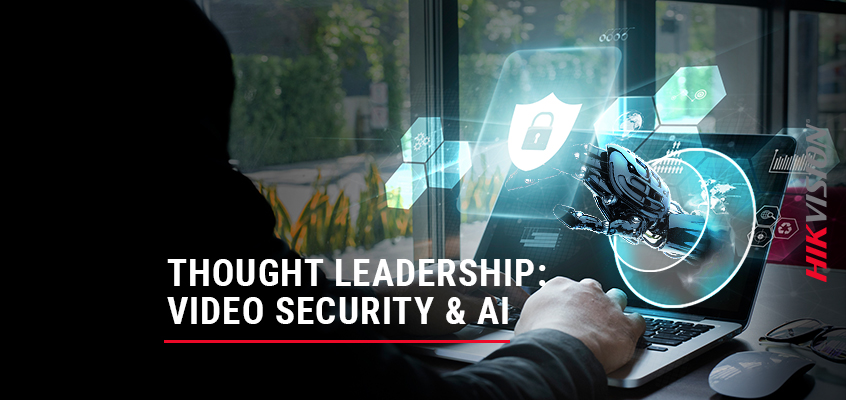Thought Leadership: Video Security + Deep Learning Equals A Winning Combination

Deep learning, AI, and analytics are no longer just trending topics within the physical security sector. Rather, these technologies have matured into field proven solutions, increasingly deployed across the industry to address both new and longstanding challenges. Nowhere is this maturity more evident than the integration of deep learning and video security.
Today, deep learning and video security combine to form new solutions aimed at filling many of the gaps associated with traditional video imaging systems. This includes the ability to gather images in challenging scene conditions, deliver lightning-fast post event searches, and significantly reduce false alarms. Moreover, these solutions deliver a tangible return on investment (ROI) coupled with a low total cost of ownership (TCO). It’s a win-win for both end-users and security integrators now armed with the solutions that transform video security from reactive to proactive.
The following combinations exemplify the latest and greatest in deep learning embedded video technologies:
Video Access + Biometrics: Advanced Security at the Door
Touchless video and biometric technologies provide a multi-tiered solution for better video security, access control, and visitor management applications that improve both physical security and workforce management operations. When installed at the door, applications include physical access based on biometric authentication technology, live video imaging, accurate time and attendance, and intercom functions. Biometric solutions with embedded thermal imaging can also be deployed for health safety and compliance, further leveraging their ROI potential. The integration of analytics either embedded in end-point devices like cameras and access control readers, or through centrally applied software via an intelligent video management system (VMS), provide new and advanced levels of protection for entry/egress at virtually any facility.
Outdoor Cameras + Low-Light Technology: Vivid Imaging 24/7
When it comes to ensuring security and safety, seeing every detail is critical—especially in low-light conditions. Outdoor cameras equipped with state-of-the-art image processing along with advanced sensors and large apertures protect people and property at night with the same sharp rendering as in daylight. These new breakthroughs in low-light technology can be applied across a variety of form factors, such as panoramic cameras and solar cameras, for the ultimate in outdoor imaging. Cameras powered by these technologies render clear imaging with vivid details for video evidence, improved alarm accuracy for real security threats, and video search efficiency, taking outdoor video security above and beyond what was previously possible.
2-in-1 Cameras + Deep Learning: Advanced Interior Views
Interior stairwells and hallways pose a unique video security challenge given their inherent narrow and often long physical dimensions. Dual lens cameras are ideal for such applications, often offering two-directional video security or a 2-in-1 body style wherein both fixed and PTZ lenses deliver simultaneous large area and detailed views. These cameras can be further enhanced using deep learning-powered processing that offers acute light sensitivity and vertical orientation to resolve longstanding security issues in poorly lit, narrow spaces. With the addition of new intelligent analytics, cameras in hallways and stairwells can now be used for a variety of applications like deterring violence or bullying detection, and to locate specific individuals or objects within a facility based on specific characteristics such as clothing type and color, accessories like hats and eyeglasses, and more.
NVRs/DVRs + Video Analytics: False Alarm Reduction
New Network Video Recorders (NVRs) and Digital Video Recorders (DVRs) are now capable of applying video analytics to any connected data stream or analog video system. This means that existing security camera systems can be made instantly smarter without the cost of entire system upgrades. With embedded deep learning algorithms, these NVRs/DVRs detect and classify targets, focusing exclusively on human and vehicle events to dramatically reduce false alarms commonly caused by animals or trees swaying in the wind. By producing more reliable alarms, security teams are more time efficient and can focus more resources on responding to mission critical tasks.
As deep learning and AI driven solutions continue to gain popularity, the coalescence of security solutions also grows as evidenced in the above examples. Enterprise operations and their security teams will continue to reject the idea of single-function systems in favor of budget-friendly, multi-tasking solutions. This helps organizations meet the needs of an evolving workforce while addressing modern security and health-safety concerns. Expect to see more video security and deep learning couplings pop-up as these technologies continue to evolve.
Contact your local Hikvision representative to learn more about these solutions.
